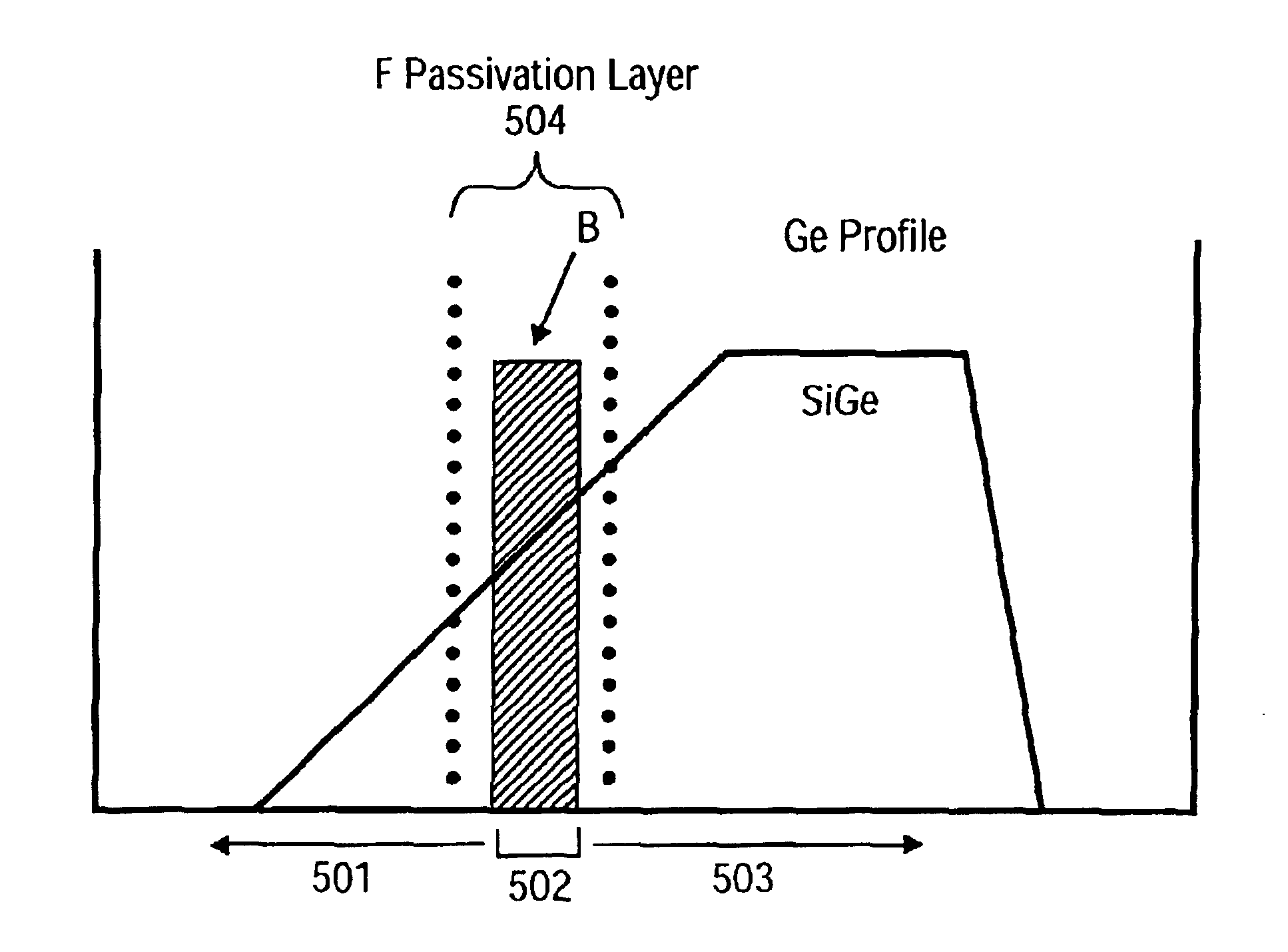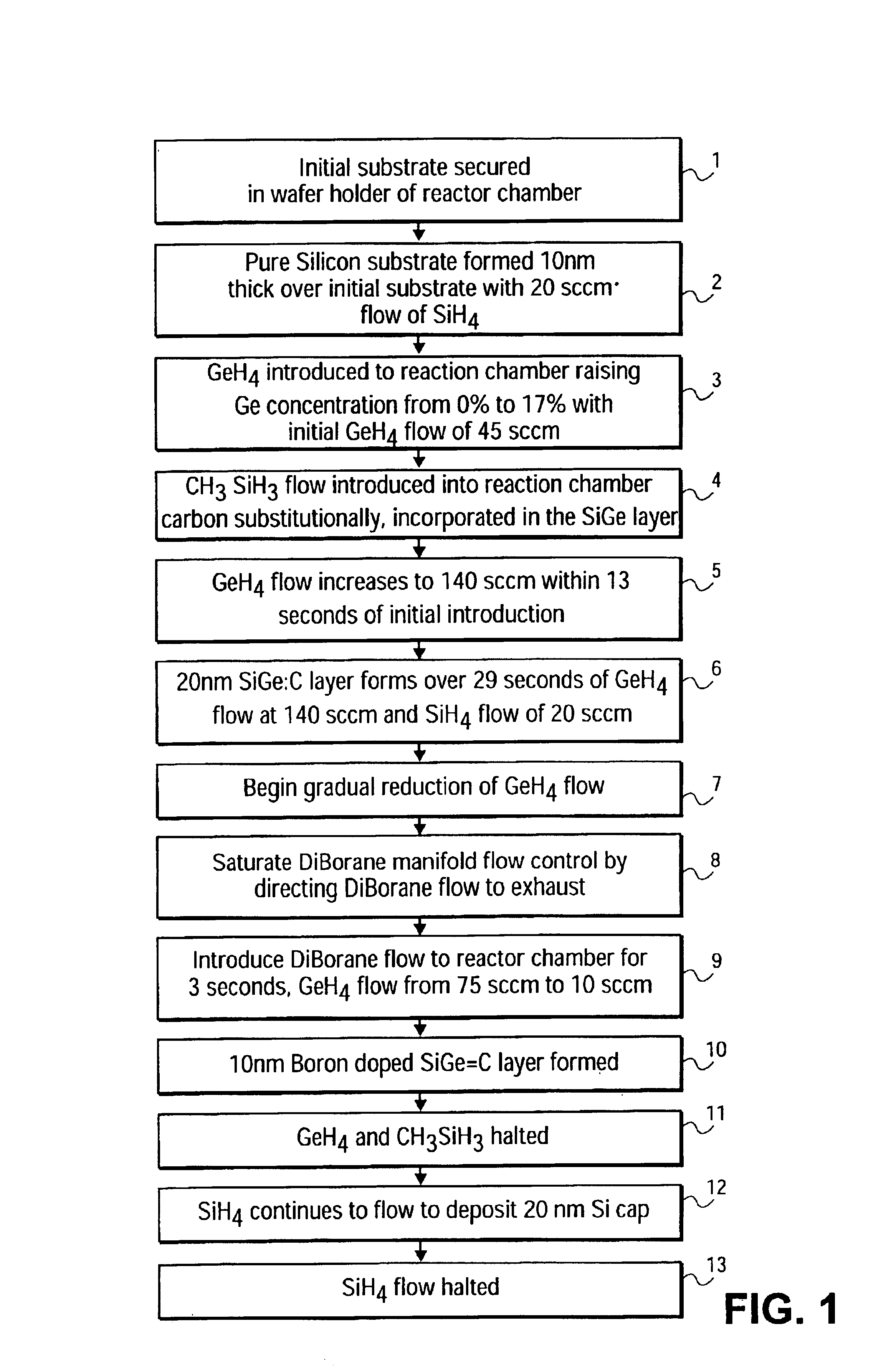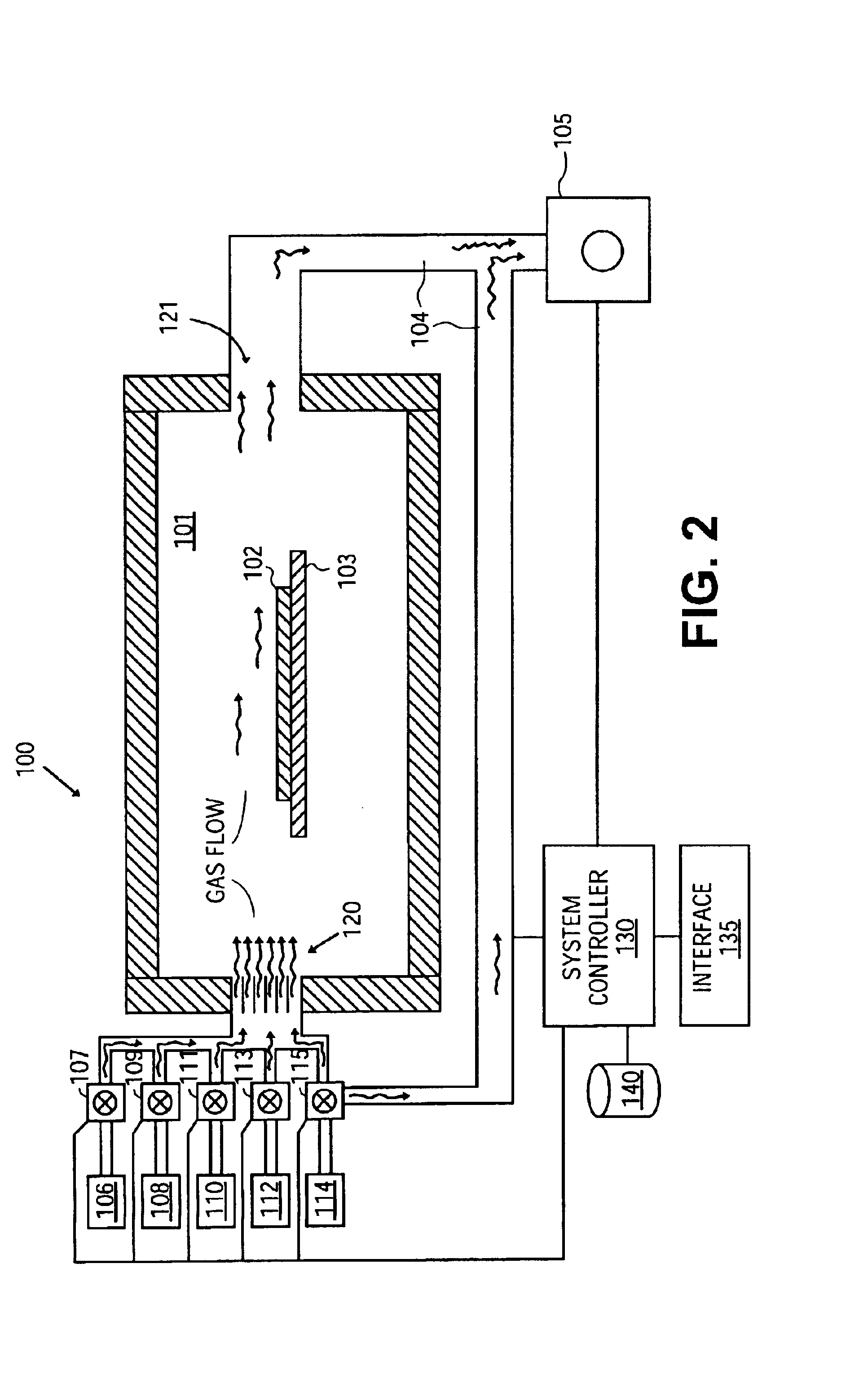Method for fabricating a bipolar transistor base
a bipolar transistor and base technology, applied in the direction of basic electric elements, electrical equipment, semiconductor devices, etc., can solve the problems of limited further reliably decreasing the base width of current methods for forming hbts
- Summary
- Abstract
- Description
- Claims
- Application Information
AI Technical Summary
Benefits of technology
Problems solved by technology
Method used
Image
Examples
Embodiment Construction
[0020]Exemplary embodiments are described with reference to specific configurations and techniques. Those of ordinary skill in the art will appreciate the various changes and modifications to be made while remaining within the scope of the appended claims. Additionally, well known elements, devices, components, circuits, process steps and the like are not set forth in detail.
[0021]FIG. 1 is a flow chart of one embodiment of a method of forming a heterojunction bipolar transistor (HBT). FIG. 2 illustrates a substrate in a chamber undergoing the method described in FIG. 1. FIGS. 7-12 show the formation of an HBT on a substrate according to one method.
[0022]Referring to FIG. 1, a wafer or substrate is placed in a reactor (block 1). Referring to FIG. 2, Reactor 100 includes reactor chamber 101. In one embodiment, the chamber is that of an Epsilon® E3000 300 millimeters (mm) Epitaxial Reactor or E2500 or E2000 200 mm Epitaxial Reactor manufactured by ASM, Inc. Within reactor chamber 101 ...
PUM
| Property | Measurement | Unit |
|---|---|---|
| chamber pressure | aaaaa | aaaaa |
| temperature | aaaaa | aaaaa |
| width | aaaaa | aaaaa |
Abstract
Description
Claims
Application Information
 Login to View More
Login to View More - R&D
- Intellectual Property
- Life Sciences
- Materials
- Tech Scout
- Unparalleled Data Quality
- Higher Quality Content
- 60% Fewer Hallucinations
Browse by: Latest US Patents, China's latest patents, Technical Efficacy Thesaurus, Application Domain, Technology Topic, Popular Technical Reports.
© 2025 PatSnap. All rights reserved.Legal|Privacy policy|Modern Slavery Act Transparency Statement|Sitemap|About US| Contact US: help@patsnap.com



